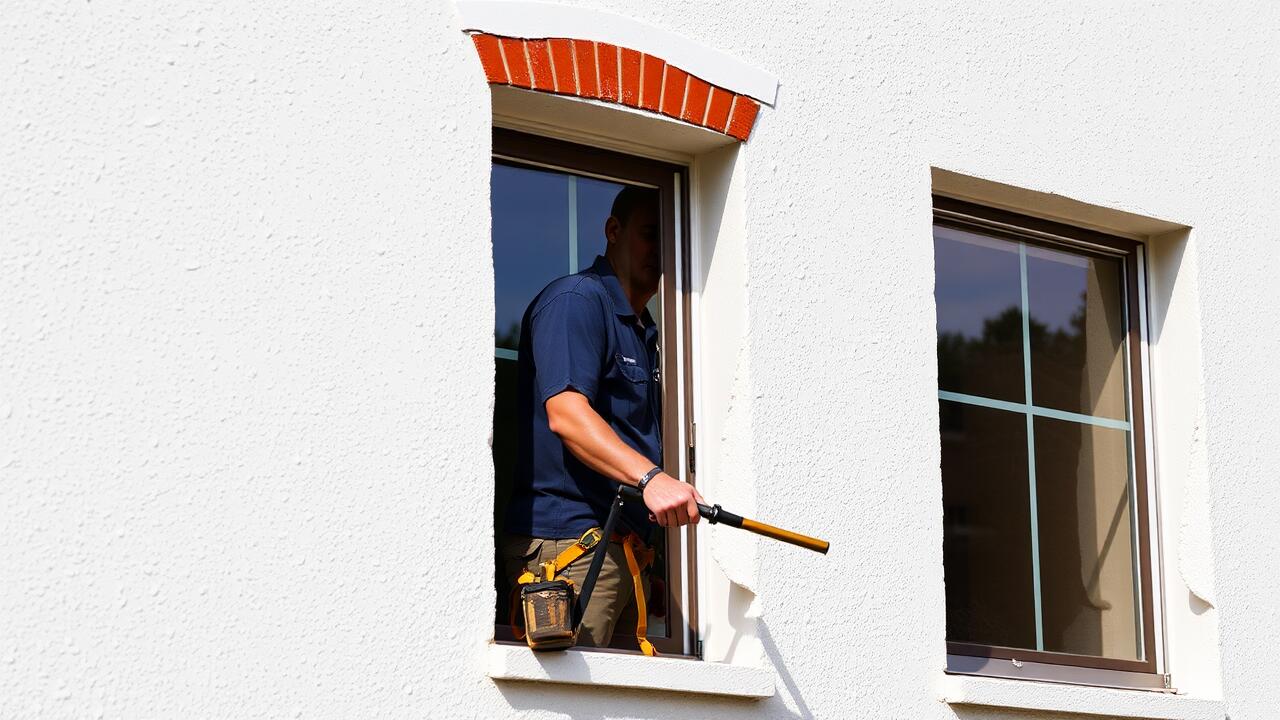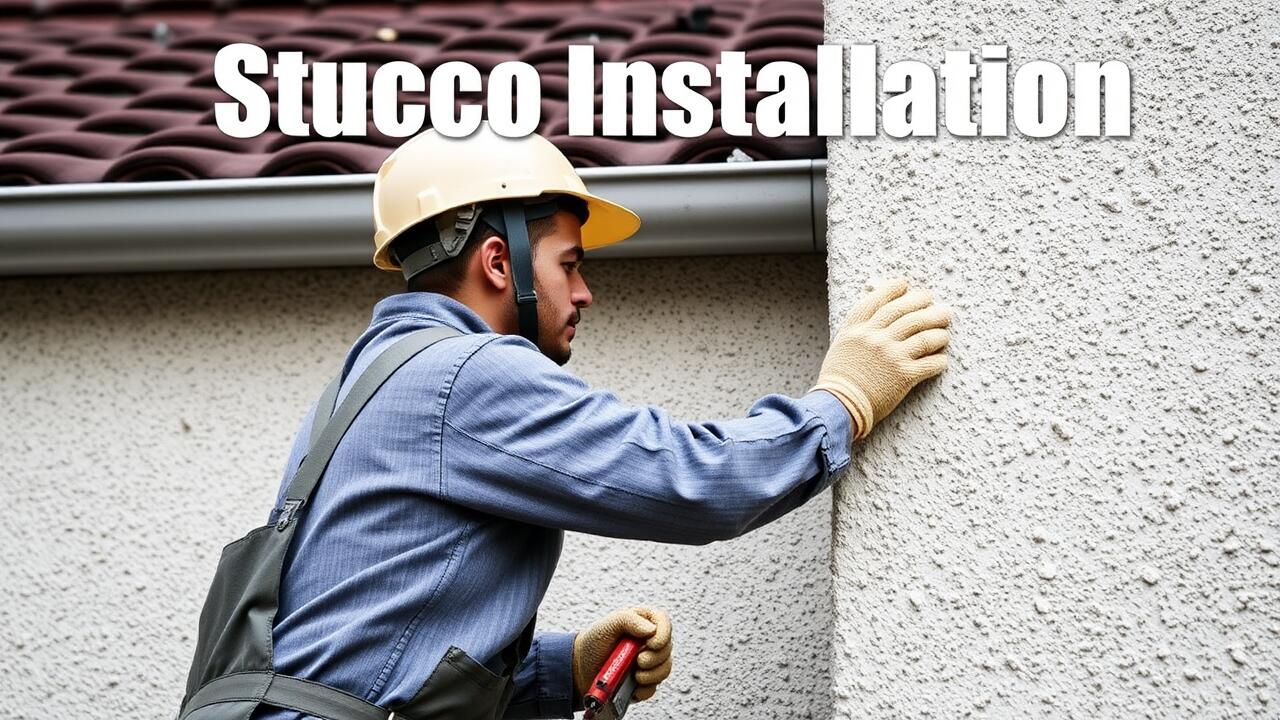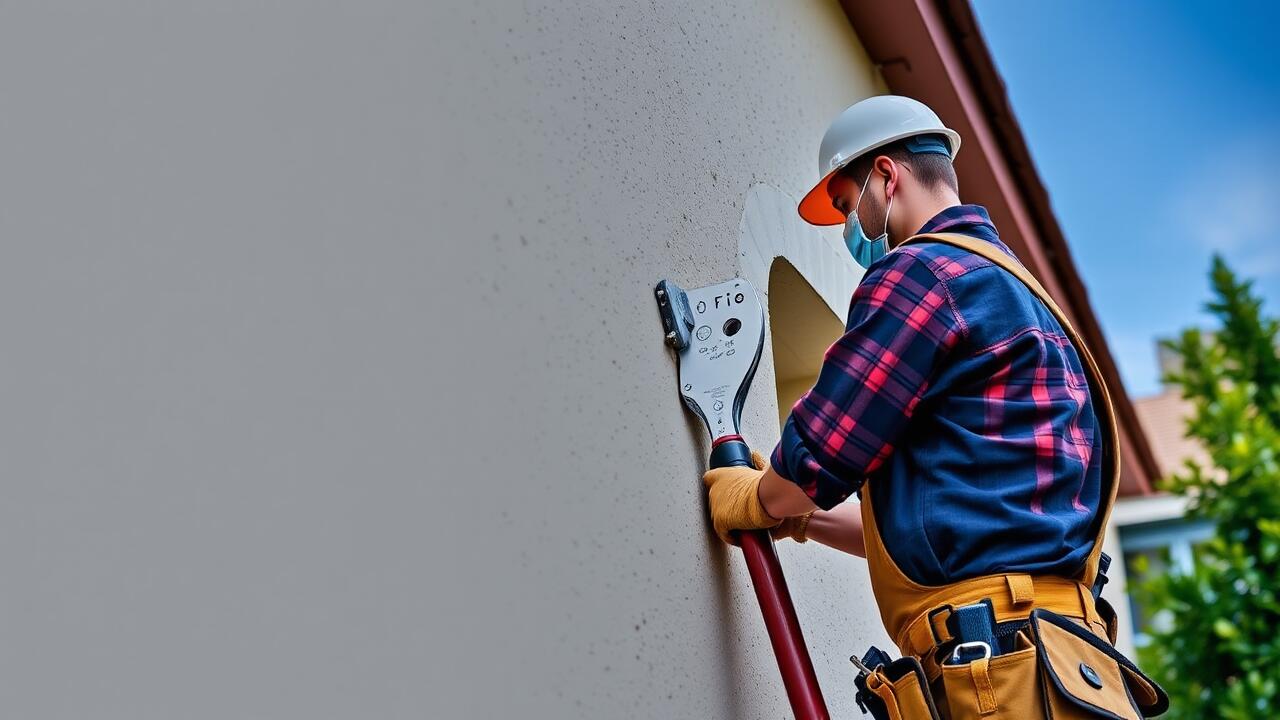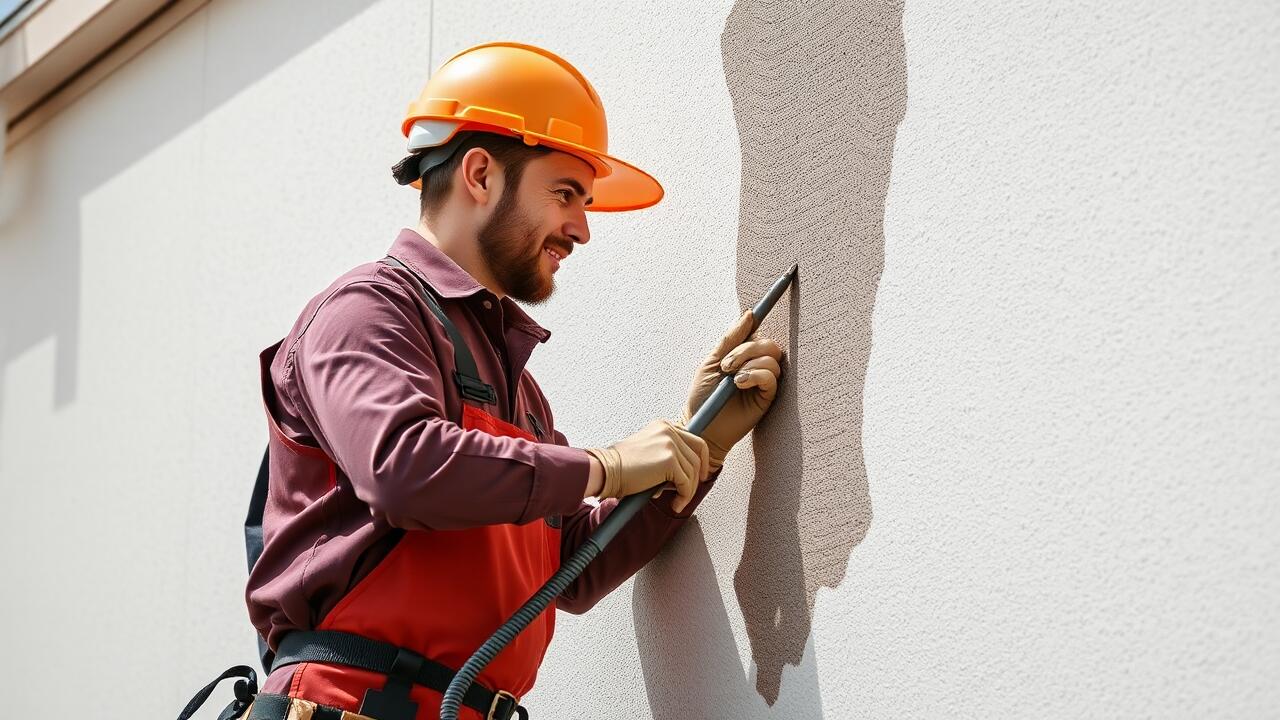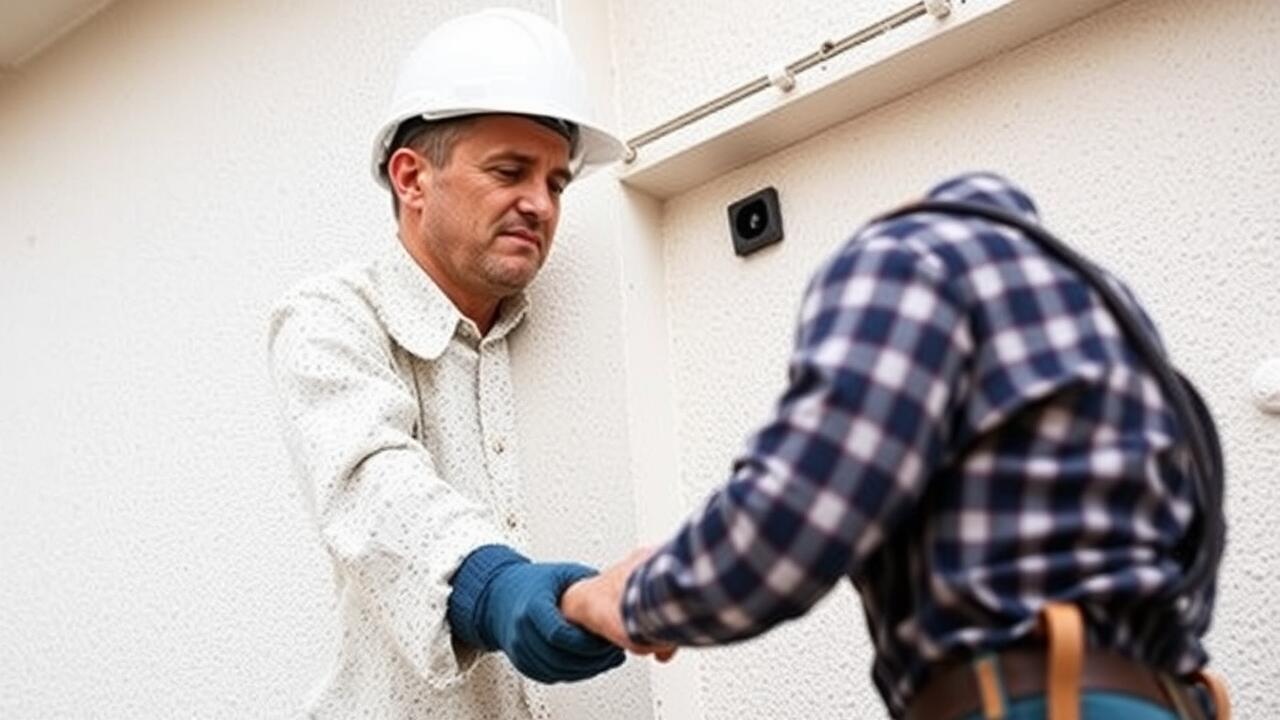
Adding the Brown Coat
The brown coat serves as an important layer in the stucco application process. It adds thickness and helps create a stable base for the final finish. Applying this layer requires a mix of sand, Portland cement, and water, achieving a consistency similar to peanut butter. This layer should be applied evenly to prevent any inconsistencies in the final finish. Professionals often use a trowel or a hawk to ensure an even, smooth surface.
In areas like Sherman Oaks, Los Angeles, stucco installation has become a popular choice for both residential and commercial buildings. The brown coat must cure properly before applying the final layer, ensuring the integrity and durability of the stucco finish. During this process, it is crucial to monitor the temperature and moisture levels as they directly affect how well the brown coat adheres to the underlying layers. Proper techniques during this stage will ensure a long-lasting and attractive stucco facade.
Application Process for the Brown Coat
The application of the brown coat is a crucial step in stucco wall construction. Prior to applying the brown coat, contractors ensure that the scratch coat has dried sufficiently. This layer serves as the primary base for the stucco and contributes to the overall strength of the wall. Typically, a mixture of sand, cement, and water is used for this coat, and it should be applied evenly to maintain a consistent surface.
During the application, installers spread the brown coat over the scratch coat using a trowel. They apply a thickness of about 3/8 inch to create a solid foundation. Special attention is given to ensuring the mix is workable but not too wet, as this can compromise adhesion. Proper coverage is necessary to achieve optimal performance and durability. For those in the area, services like Stucco Installation West Adams, Los Angeles, provide professional application, ensuring the best results for both aesthetics and longevity.
Finishing Techniques for Stucco
Various finishing techniques can enhance the aesthetic appeal of stucco walls. Some popular options include sand finish, dash finish, and lace or skip trowel. Each technique creates a unique texture, allowing homeowners to choose a style that best complements their architecture. Proper application requires a skilled hand to achieve the desired effect while ensuring longevity in multiple weather conditions.
In regions like Boyle Heights, Los Angeles, the finishing technique can also be influenced by local aesthetics and styles. It’s important for contractors to understand the preferences of the community when selecting finishes. The right choice not only improves visual appeal but also contributes to the protection of the wall surface against environmental elements. Stucco Installation Boyle Heights, Los Angeles, often showcases diverse finishes that reflect the cultural richness of the area.
Types of Finishes Available
Stucco offers a variety of finishing techniques that help homeowners achieve their desired aesthetic. One popular option is the smooth finish, which provides a sleek and modern appearance. This finish requires careful troweling to ensure a seamless look, making it ideal for contemporary architectural styles. Another common finish is the float finish, which features a slightly textured surface achieved using a float tool. This method adds a subtle dimension to walls while maintaining a clean appearance.
For those seeking a more pronounced texture, the dash finish is an excellent choice. This technique involves throwing or splattering stucco onto the wall, creating a rugged and dynamic look. Another alternative is the scrapped finish, which involves scraping the surface of the stucco to enhance texture while revealing the base coat underneath. Each of these finishes can significantly impact the overall appearance of a building. Homeowners interested in these options often explore local services such as Stucco Installation Boyle Heights, Los Angeles, to find skilled professionals who can bring their design visions to life.
Curing and Drying Process
Proper curing is crucial for the longevity and durability of stucco walls. After the brown coat is applied, the wet plaster needs time to set and gain strength. During this period, it is essential to keep the surface moist to prevent cracking. Typically, this involves lightly misting the walls with water at regular intervals, especially during hot or windy weather. This practice ensures that hydration is maintained, allowing the stucco to cure evenly and effectively.
The drying process can take several days, depending on weather conditions and the thickness of the application. Ideally, the ambient temperature should be stable during this time. In regions like Boyle Heights, Los Angeles, variations in climate can impact the drying stages. Homeowners and contractors must monitor conditions closely to avoid potential complications that could arise from rapid drying. Adequate attention during this phase guarantees a solid foundation for any finishes applied later on.
Essential Curing Practices
Curing stucco is crucial for ensuring durability and longevity. It involves maintaining adequate moisture levels to prevent cracks and enhance the strength of the material. During the first week after application, keeping the stucco damp is vital. This can be achieved by lightly misting the surface with water several times a day. A consistent moisture level helps the stucco cure properly, allowing it to reach its full potential.
In areas like Echo Park, Los Angeles, considerations for the local climate play a significant role in the curing process. Especially in warmer conditions, the risk of rapid drying increases. Therefore, covering the stucco with wet burlap or plastic sheets can provide additional moisture retention. Regular monitoring throughout the curing phase is essential to ensure optimal results. Sticking to these essential curing practices during Stucco Installation Echo Park, Los Angeles, leads to a stronger and more resilient finish.
FAQS
What materials are used to make stucco walls?
Stucco walls are typically made from a mixture of cement, sand, lime, and water. Additional additives may be included to enhance durability and workability.
How long does it take for stucco to dry completely?
The drying time for stucco can vary, but it generally takes about 24 to 48 hours for the first coat to set. Full curing can take several weeks, depending on weather conditions.
What is the purpose of the brown coat in stucco application?
The brown coat serves as the base layer in the stucco application process. It provides a stable foundation for the final finish, helps improve adhesion, and enhances the overall strength of the wall.
Can stucco walls be painted over?
Yes, stucco walls can be painted over, but it’s important to use masonry or acrylic paint specifically designed for stucco surfaces to ensure proper adhesion and longevity.
Are there different types of finishes available for stucco?
Yes, there are various types of finishes available for stucco, including sand, dash, and smooth finishes. Each type offers a different aesthetic and texture, allowing for customization based on personal preference.
